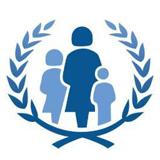
The Partnership for Maternal, Newborn & Child Health (PMNCH) will lead partner-based consultations on the development of an updated Global Strategy for Women’s, Children’s and Adolescents’ Health, to be launched in 2015.
Through this process, PMNCH will also be gathering stakeholder input on the Global Financing Facility (GFF) to build long-term domestic and international funding commitments for women’s, children’s and adolescents’ health. The Global Financing Facility in support of Every Woman Every Child was developed by the World Bank Group and the Governments of Canada, Norway, and the United States of America in response to the Secretary-General’s call for expanded cooperation for action.
The GFF aims to support the delivery of the Global Strategy for Women’s, Children’s and Adolescents’ Health as an important financing instrument. The overall goal of the GFF will be to contribute to the global efforts to end preventable maternal, newborn, child and adolescent deaths and improve the health and quality of life of women, adolescents and children.
The updated Global Strategy for Women’s, Children’s and Adolescents’ Health was the focus of discussions at a recent Commission on Information and Accountability (CoIA) stakeholder meeting in Geneva. A session led by Dr Flavia Bustreo, World Health Organization; Ms Nana Taona Kuo, UN Executive Office of the Secretary General; and Dr Shyama Kuruvilla, The Partnership for Maternal, Newborn & Child Health (PMNCH) introduced participants to key processes and content areas for developing an updated Global Strategy in the post 2015 era to support the new Sustainable Development Goals (SDGs), to be announced in September 2015.
Presentation on the updated Global Strategy for Women’s, Children’s & Adolescents’ Health
A conceptual framework , recommended content areas and new evidence proven to be successful in improving women’s and children’s health were outlined at the CoIA meeting, and will go on to inform the development of an updated Global Strategy for Women’s, Children’s & Adolescents’ Health.
Operating principles for an updated Global Strategy
- National leadership: Strategy structured so that it is led by national plans and priorities, supported by development partner alignment including to reduce fragmentation of efforts and financing
- Engagement of all stakeholders: Governments and parliamentarians; multilateral agencies; donors and foundations; private sector; health care professionals – public and private; civil society, youth and media, and women, children and adolescents, especially in underserved contexts
- Constituencies beyond RMNCAH: Both within the health sector, e.g. with communicable and non-communicable diseases; and with health-enhancing sectors, e.g. nutrition, education, water, sanitation and hygiene, infrastructure
- Communication: Effective communication with all stakeholders and constituencies, and to ensure the accessibility and relevance of the Strategy
- Human rights-based approach: in the development, implementation and review of the Global Strategy, based on related legal entitlements for women, children and adolescents
- Accountability at all levels: efficient and effective mechanisms with a foundation in existing national accountability processes, an independent review component and harmonization of accountability initiatives